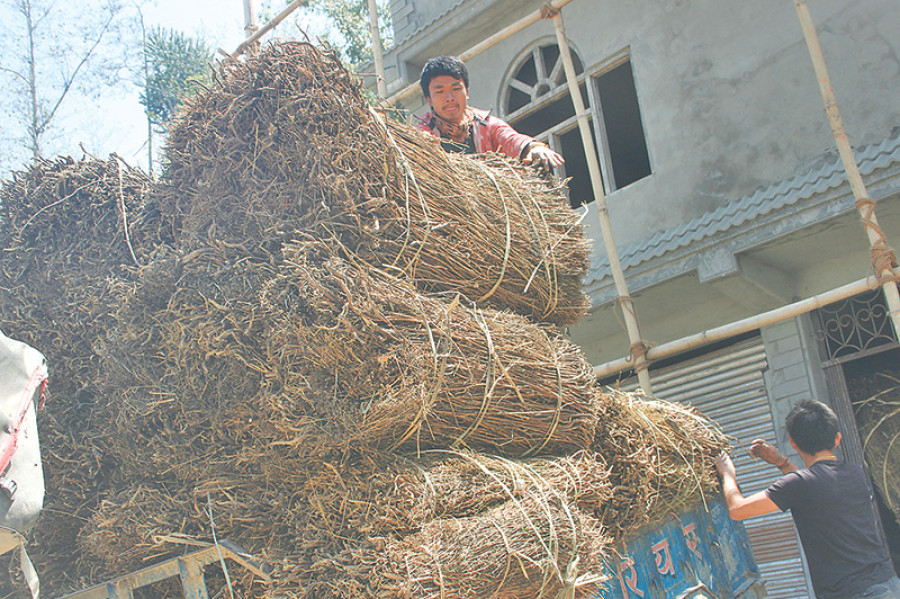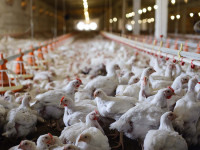Money
Chiraito farmers look for more accessible markets
Difficulties in transporting chiraito plants to China, where there is a huge demand for the medicinal herb, has forced growers in Taplejung to look for alternative markets.
Ananda Gautam
Difficulties in transporting chiraito plants to China, where there is a huge demand for the medicinal herb, has forced growers in Taplejung to look for alternative markets.
Chiraito (Swertia chirayita) costs Rs8,000 per 40 kg in the region, but fetches up to Rs20,000 if it can be shipped to northern neighbour China.
Transportation costs are high because goods have to be carried by porters, yak caravans or helicopters due to the difficult terrain. So farmers have started sending their chiraito crops to the nearby city of Kakarbhitta where the herb can be sold for Rs11,000 per 40 kg.
Indra Gurung, a farmer from Hangdewa, has been sending his chiraito crops to the border towns in China for the past two years. However, currently he sells his products to local traders as merchants from China rarely visit the region.
Moreover, middlemen have entered the trade who are hard bargainers, and farmers have not been able to make as much from their crops as they used to. The middlemen sell the herb to Chinese traders with a big markup.
The difficulties and reduced earnings have prompted chiraito farmers to turn their attention to markets in India. All they have to do is load their crops on vehicles bound for India. “That is why I have started to export all my production to India,” Gurung said.
Apart from China and India, the chiraito produced in Nepal is exported to Bangladesh and Italy.
The herb is principally used for the production of medicines. It is considered to be good for people suffering from diabetes and blood pressure. In Nepal, people also use it to get relief from headache.
Meanwhile, chiraito prices have dropped sharply. The herb used to fetch Rs32,000 per 40 kg in Chinese border markets last year. This year, it is being sold for Rs20,000. Likewise, it costs Rs15,000 per 40 kg in markets near the Nepal-India border.
According to the District Forest Office, Taplejung produces around 1,000 tonnes of chiraito while Panchthar and Ilam produce 4,000 tonnes each. The plant is one of the major medicinal herbs grown in Nepal.
The high returns had encouraged many farmers to switch to growing it in place of their traditional crops. “Initially, prices were high as production was low. The scenario has changed with an increase in cultivation,” said District Forest Officer Madhav Dev.




 11.12°C Kathmandu
11.12°C Kathmandu













%20(1).jpg&w=300&height=200)
